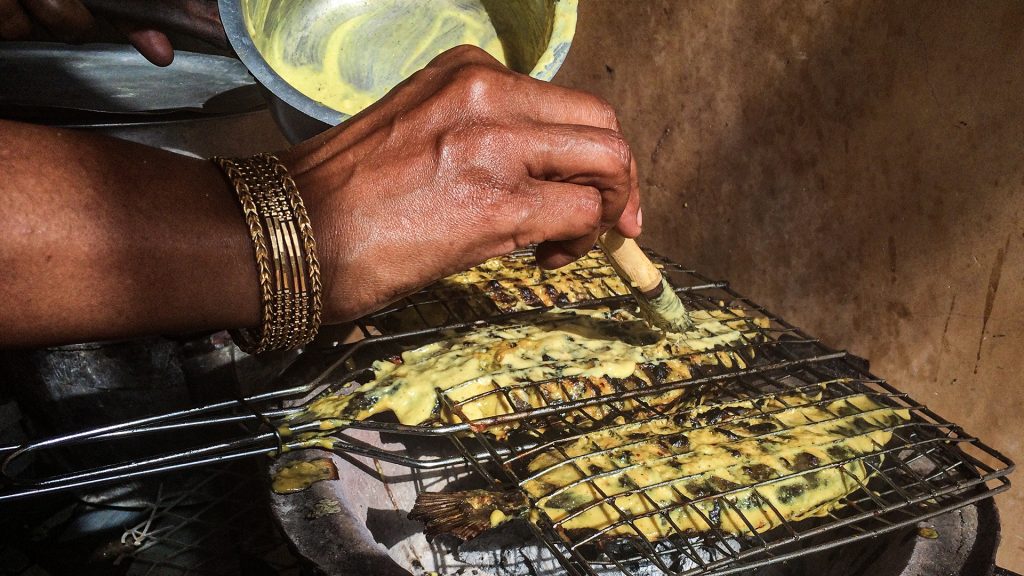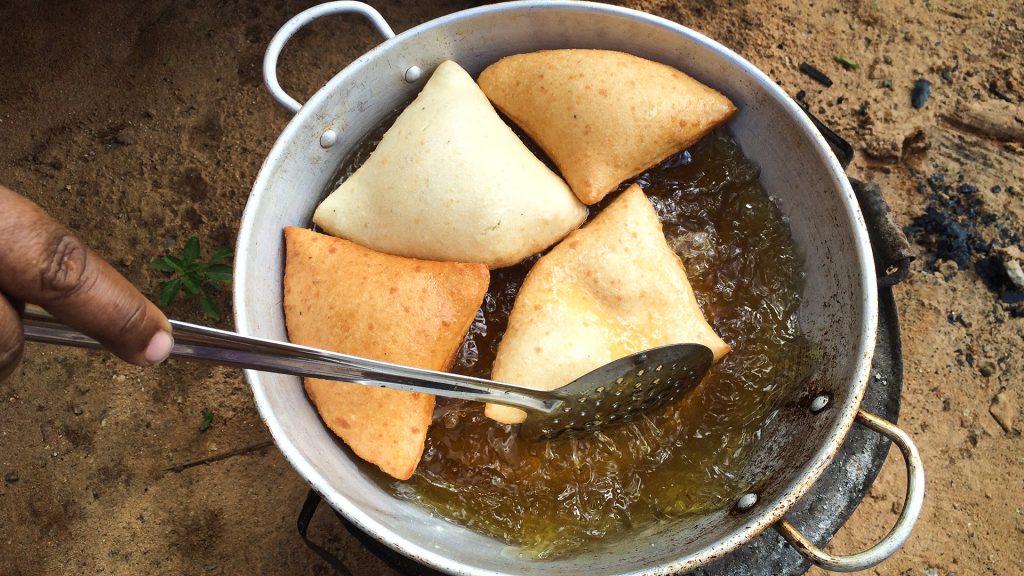Swahili cuisine is a diverse and flavourful culmination of inter-community exchange, exploration, and conquest. It is a tangible result of the East African coast’s connection to surrounding communities, from the nearest towns to far-flung corners of the Indian Ocean world. The connections have resulted in the adaption of recipes from as far as China and Persia that were repurposed and enhanced based on local ingredients and tools.
Cooking styles and techniques on the Swahili coast have been passed down orally and practically for centuries. Young impressionable minds grow up learning through practice and memory, and not in books or classrooms. Having an elaborate cuisine as part of the culture and heritage results in numerous masters within families and neighbourhoods, therefore providing a large pool of culinary connoisseurs to learn from who are almost always within reach.
As tools and technologies evolve and new ingredients are introduced, each generation develops the cuisine further through innovation. Take, for example, fluffy, sweet, vibibis. Forty years ago, while preparing the rice pancakes, cooks would grind grains on a stone mortar and cook the completed batter over firewood. Today’s methods are entirely different. Rice is ground in a blender to speed up the process. The batter is cooked on stovetops with specialised non-stick pancake pans or in electric pancake makers. To date, Swahili cooks continue to diversify their cuisine by learning new recipes from different parts of the world and customising them for local tastes. Carrying on the practice of their ancestors that gave rise to the broad cuisine we see today.

Colonisation, urbanisation and intermingling of communities saw the spread of Swahili recipes further away from the coast. People would carry a little piece of home with them into these new cosmopolitan areas, and therefore colonial administrative towns became epicentres for recipes to diffuse into new territories. In countries like Kenya, during the birth of a nation, and the search for ‘Kenyanness’, resulted in some Swahili dishes becoming symbols of national identity. The recipes evolved outside their culture. Many of the teachers were no longer culinary masters, but students who had grasped the basics. Consequently, crucial ingredients and techniques disappeared from some of the recipes.
Technique Vs. Recipe
Recipes and techniques are not mutually exclusive, but techniques almost always trump recipes. Ideally, a recipe is a combination of ingredients and techniques in a specific order. Mahamri and naan use the same technique but the ingredients are different. Biriani and pilau use similar ingredients but different techniques.
A recipe may appear perfectly measured, but the moment an essential technique is left out, then the end product will be short of a disaster if the cook is lucky. This is why two individuals can be given the same exact recipes and follow it to the tee, but the execution results in two different dishes as most recipes need technique rather than precision. Technique is the line that separates great cooking from good cooking.
The technique is what determines subtleties like where to place one’s thumb and forefinger when kneading dough, how to know when to let a batter rest, how thick to slice an ingredient etc. Three famous Swahili dishes: mahamri, sambusa and viazi vya karai, all require deep frying but the conditions for each vary significantly. After a couple of scoldings from an elder or numerous disastrous attempts in the kitchen, one might finally understand – samosas need mildly hot oil to avoid the blister-like bumps. The viazi vya karai need moderately hot oil to cook all through without absorbing too much oil or charring the outer batter. And extra hot oil to fully puff up the pillow-soft mahamri. To master Swahili cooking, one must master Swahili techniques.

What goes into Swahili cooking
The secret in Swahili cooking lies in understanding flavour profiles, textures and consistencies, ratios, quality of ingredients and how best to enhance them. Skilled Swahili cooks understand how various ingredients react to different conditions, and the impact of cooking elements (temperature, heat source, and tools) on the cooking process. Intuitive knowledge of food science and art and its applicability amplifies Swahili cooks’ abilities to improvise and substitute. Depending on their skill level, Swahili aunties either uphold their ability ‘kupika bila vipimo’ as a point of pride or complain that it makes their work tedious and impossible. ‘Kupika bila vipimo’ and the skill of improvisation is what turns methods and techniques into the art of Swahili cooking.
In a Swahili kitchen, one doesn’t only know when and how to use ingredients, but also the conditions and limits that make each one useful. It is about understanding, protein, fats and oils, acids and seasoning and the boundaries of each ingredient you use. Lemon juice and other acids, for instance, are added at the end of most meals to prevent them from turning bitter or forming a coating over starches like potatoes, thereby prolonging their cooking time. You will then find a seasoned cook using the acidity of lemon juice in a dish like viazi vya nazi to allow the potatoes to absorb more flavours in the pot without overcooking.
The ability to understand ingredients and methodologies without a defined recipe is a nightmare for new learners. Still, it is the norm for anyone who knows their way around a Swahili kitchen. The nature of the cuisine—an emphasis on technique and a disdain for measured recipes—means that like in any other art, once Swahili cooks master technique, they deviate from the standard to enhance dishes. You’ll rarely find two identical Swahili recipes; families and individuals leave their signatures on long-cherished meals. Equate it all to memorising how to play a musical score on a particular instrument versus understanding how each note sounds on each musical instrument. One of the few times you will see a Swahili keen on a recipe and following it to precision is when baking. Unlike other cooking methods, baking is bound more by the laws of science rather than art. Ratios and methodologies leave very little room for substitution and improvisation.
The epitome of mastering the cuisine is understanding a dish to the point of having the ability to scale up cooking for four people to cooking for 400 hundred people without compromising perfection. We see how adept Swahili aunties are in the kitchen, whenever they can instantly accommodate three last-minute guests that show up just when the table is being set. Different individuals specialise in different things, and therefore when one wants to learn how to make a specific dish, they often go to learn from whoever they task to make the dish at a large gathering.
Growing up in a culinary community such as the Swahili means that even if one can’t cook, they usually have a feel for how good Swahili food tastes. Being surrounded by Swahili cuisine makes everyone a skilled food critic. The critiques are essential to the preservation of quality as this pushes aspiring cooks towards perfection. Without commentary from individuals who are familiar with the dishes, many hold a false sense of belief that they are experts of Swahili cooking yet they are a bite away from their entire career being called a sham.
For those keen on learning how to cook Swahili dishes, understand that behind every Swahili dish, there are essential techniques that can not be dismissed. Even if you don’t have access to Swahili communities, remember that this food is rooted in lengthy history and continues to be passed down in Swahili kitchens; find sources that honour these truths, and you won’t be led astray. And, just like an amateur Swahili child rolling out their first chapati, you may stumble; your samosas may blister, and your mahamris may not rise up to the occasion, but with patience and care, you’ll get there.







Nice and elaborate read
Whereas am far from being any kind of a cook, the reverting, almost peotic flow of the article has me almost drooling.
Thanks for an informative write..
Thank you Hiistoriya, the article is concise and tends to give one a peek into one of the most important skills the Swahili communities adapt to in communicating their generosity!
This is a beautiful read.
Having grown in the coast and having innately acknowledged all these things. This article is so fluidly relatable, really is a great read